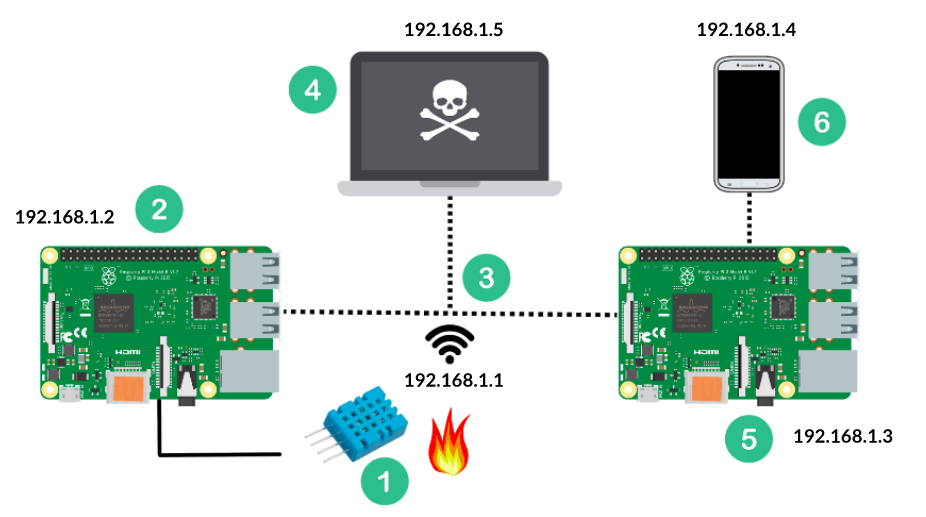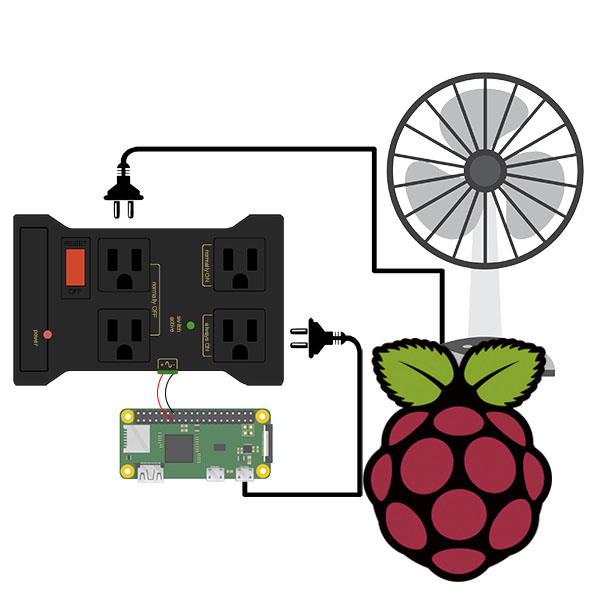Remote Raspberry Pi IoT projects have become increasingly popular among tech enthusiasts, developers, and hobbyists alike. As the Internet of Things (IoT) continues to expand, Raspberry Pi serves as an excellent platform for creating innovative and cost-effective solutions. Whether you're a beginner or an experienced developer, this guide will help you explore exciting possibilities in remote Raspberry Pi IoT projects.
From home automation to environmental monitoring, Raspberry Pi enables users to develop remote systems that can be accessed and controlled from anywhere in the world. Its versatility, affordability, and ease of use make it an ideal choice for both small-scale experiments and large-scale implementations. In this article, we will dive deep into the world of remote Raspberry Pi IoT projects, providing you with all the information you need to get started.
By the end of this guide, you will gain a comprehensive understanding of how to design, implement, and deploy remote IoT projects using Raspberry Pi. Let's get started!
Read also:Spiderman Video Sophie A Comprehensive Guide To The Viral Sensation
Table of Contents
- Introduction to Raspberry Pi IoT
- Benefits of Remote IoT Projects
- Getting Started with Raspberry Pi
- Essential Hardware and Software
- Setting Up Remote Access
- Popular Remote IoT Projects
- Programming Languages for IoT
- Securing Your IoT Projects
- Troubleshooting Common Issues
- Future Trends in Remote IoT
Introduction to Raspberry Pi IoT
Raspberry Pi has revolutionized the way people approach technology, especially in the field of IoT. This single-board computer offers endless possibilities for creating connected devices that can communicate with each other and the outside world. Remote Raspberry Pi IoT projects allow users to interact with their systems from anywhere, making them highly versatile and practical.
One of the key advantages of using Raspberry Pi for IoT is its compatibility with various sensors, actuators, and modules. This flexibility enables developers to build projects ranging from simple home automation systems to complex industrial solutions. Additionally, the open-source nature of Raspberry Pi fosters a collaborative community where knowledge and resources are freely shared.
Remote Raspberry Pi IoT projects are not only limited to personal use but also have significant applications in industries such as agriculture, healthcare, and manufacturing. By leveraging the power of Raspberry Pi, businesses can optimize their operations, reduce costs, and enhance efficiency.
Benefits of Remote IoT Projects
Remote Raspberry Pi IoT projects offer numerous benefits that make them an attractive option for developers and businesses alike. Below are some of the key advantages:
- Cost-Effective: Raspberry Pi is an affordable platform that allows users to build complex systems without breaking the bank.
- Scalability: Projects can start small and grow over time, accommodating increasing demands and complexity.
- Accessibility: Remote access enables users to monitor and control their systems from anywhere, enhancing convenience and flexibility.
- Energy Efficiency: Raspberry Pi consumes minimal power, making it suitable for long-term deployments.
Getting Started with Raspberry Pi
Before diving into remote Raspberry Pi IoT projects, it's essential to understand the basics of setting up and configuring your Raspberry Pi. Here are the steps to get started:
- Choose the right Raspberry Pi model for your project.
- Install a compatible operating system, such as Raspberry Pi OS or Ubuntu Core.
- Connect your Raspberry Pi to a power source, monitor, keyboard, and mouse.
- Update the system software to ensure optimal performance and security.
Once your Raspberry Pi is up and running, you can begin exploring the world of IoT by connecting various sensors and devices.
Read also:Unlocking The Secrets Of Open Sexy A Comprehensive Guide
Essential Hardware and Software
Raspberry Pi Models
There are several Raspberry Pi models available, each catering to different needs and applications. Some of the most popular models include:
- Raspberry Pi 4 Model B
- Raspberry Pi 3 Model B+
- Raspberry Pi Zero W
When selecting a model, consider factors such as processing power, memory, and connectivity options to ensure it meets the requirements of your project.
Operating Systems for IoT
Choosing the right operating system is crucial for the success of your remote Raspberry Pi IoT projects. Some popular options include:
- Raspberry Pi OS
- Ubuntu Core
- ResinOS
Each operating system has its own strengths and weaknesses, so it's important to evaluate them based on your project's specific needs.
Setting Up Remote Access
Remote access is a fundamental aspect of Raspberry Pi IoT projects. To enable remote access, you can use tools such as:
- SSH (Secure Shell) for command-line access
- VNC (Virtual Network Computing) for graphical interface access
- Web-based dashboards for user-friendly interaction
Configuring these tools requires some technical knowledge, but there are plenty of tutorials and resources available to help you along the way. Additionally, ensuring secure connections is vital to protect your system from unauthorized access.
Popular Remote IoT Projects
There are countless remote Raspberry Pi IoT projects that you can explore. Some popular ideas include:
- Smart Home Automation
- Weather Monitoring Station
- Security Camera System
- Remote-Controlled Robot
Each project offers unique challenges and opportunities, allowing you to expand your skills and knowledge in IoT development.
Programming Languages for IoT
Selecting the right programming language is crucial for the success of your remote Raspberry Pi IoT projects. Some popular options include:
- Python
- Java
- C++
Python is particularly well-suited for IoT due to its simplicity and extensive library support. However, the choice of language ultimately depends on your project's requirements and your personal preferences.
Securing Your IoT Projects
Security is a critical concern when it comes to remote Raspberry Pi IoT projects. To safeguard your system, consider implementing the following measures:
- Use strong passwords and enable two-factor authentication.
- Keep your software up to date with the latest security patches.
- Limit access to your system by configuring firewalls and network settings.
By prioritizing security, you can ensure the longevity and reliability of your IoT projects.
Troubleshooting Common Issues
Even the most well-planned projects can encounter issues. Some common problems in remote Raspberry Pi IoT projects include:
- Connection errors
- Software conflicts
- Hardware malfunctions
To resolve these issues, refer to official documentation and community forums for guidance. Additionally, maintaining a backup of your system can save time and effort in case of data loss or corruption.
Future Trends in Remote IoT
The future of remote Raspberry Pi IoT projects looks promising, with advancements in technology driving innovation in the field. Some emerging trends include:
- Edge computing for faster data processing
- Artificial intelligence integration for enhanced functionality
- Sustainability-focused solutions for environmental impact reduction
By staying informed about these trends, you can position yourself at the forefront of IoT development and contribute to shaping the future of connected technologies.
Conclusion
Remote Raspberry Pi IoT projects offer endless possibilities for creativity and innovation. By following the guidelines outlined in this article, you can successfully design, implement, and deploy your own IoT solutions. Remember to prioritize security, choose the right tools, and continuously expand your knowledge to stay ahead in this rapidly evolving field.
We encourage you to share your experiences, ask questions, and explore further resources by engaging with our community. Together, let's build a smarter, more connected world!


